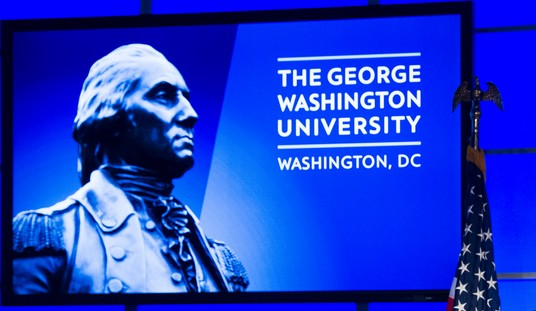What a difference a couple of decades make. Appearing in Sunday’s New York Times was the headline, “Democrats Try Wooing Ones Who Got Away: White Men”:
Frank Houston knows something about the longtime estrangement of white men from the Democratic Party. His family roots are in nearby Macomb County, the symbolic home of working-class Reagan Democrats who, distressed by economic and social tumult, decided a liberal Democratic Party had left them, not the other way around.
Mr. Houston grew up in the 1980s liking Ronald Reagan but idolizing Alex P. Keaton, the fictional Republican teenage son of former hippies who, played by Michael J. Fox on the television series “Family Ties,” comically captured the nation’s conservative shift. But over time, Mr. Houston left the Republican Party because “I started to realize that the party doesn’t represent the people I grew up with.”
Now, as chairman of the Democratic Party in Oakland County, Michigan’s second largest, Mr. Houston is finding out how difficult it can be to persuade other white men here to support Democrats, even among the 20 or so, mostly construction workers, who join him in a rotating poker game.
Mr. Houston is part of an internal debate at all levels of his party over how hard it should work to win over white men, especially working-class men without college degrees, at a time when Democrats are gaining support from growing numbers of female and minority voters.
It is a challenge that runs throughout the nation’s industrial heartland, in farm states and across the South, after a half-century of economic, demographic and cultural shifts that have reshaped the electorate. Even in places like Michigan, where it has been decades since union membership lists readily predicted Democratic votes, many in the party pay so little attention to white working-class men that it suggests they have effectively given up on converting them.
Starting of course with the man who publishes the Times himself. In 1992, New York Magazine reported:
Not long ago, Arthur Sulzberger, Jr., the 41-year old publisher of the New York Times, was greeting people at a party in the Metropolitan Museum when a dignified older man confronted him. He told Sulzberger that he was unhappy about the jazzy, irreverent new “Styles of the Times” Sunday section. “It’s very”—the man—paused—“un-Times-ian”
“Thank you,” New York Magazine quoted Sulzberger as replying, adding that the Times’ publisher “later told a crowd of people that alienating older white male readers means ‘we’re doing something right.'”
At least until the bill came due for such racialist thinking, which has since become near universal amongst Pinch’s fellow “liberals,” including elite Obama voters such as late screenwriter-director Nora Ephron, who wrote a piece for the Huffington Post on the 2008 election misanthropically titled “White Men,” in 2008, and the wall-to-wall racialism of today’s MSNBC. Or Timesman David Carr’s rant on HBO’s Real Time with Bill Maher in 2011, in which he vilified midwesterners as “the dance of the low-sloping foreheads” — all the more ironic given that Carr grew up in Minnesota.
In either a nice bit of Jungian synchronicity, or a macabre bit of humor from the New York Magazine staff, there’s an ad under the above-quoted 1992 article in New York Magazine for a skincare product with the headline, “Does Your Skin Act Confused?”, which sums up the mindset of the Pinch-era Times rather nicely. In Gray Lady Down, his brilliant 2011 expose on the modern New York Times, Bill McGowan wrote:
Others bristled at the generally antagonistic atmosphere [in the Times’ offices], which Peter Boyer, a former Timesman, described in a 1991 Esquire article as “moderate white men should die.” Boyer left the Times to become a staff writer at the New Yorker. Other accomplished midcareer Timesmen left too, taking with them vital experience, institutional memory and a special old-fashioned Times sensibility and culture. Rubbing salt into some of the old guard’s wounds, [Timesman Max Frankel], backed by Sulzberger, virtually admitted that the commitment to diversity made double standards acceptable. At a forum at Columbia University, Frankel conceded that it would be difficult to fire a black woman, even if she were less good than another candidate.
Which dovetails well with a legendary Freudian slip on the topic by Howell Raines, the Times’ former editor:
“This campaign has made our staff better and, more importantly, more diverse.”
In January of 2011, while Timesmen such as Paul Krugman and other members of the left obsessed over magical thinking concerning clip art and scary words, Alec Baldwin asked in the Huffington Post, “What Changes Will We Make After the Giffords Shooting?”* As we’ve seen in the years since: the answer amongst his fellow NBC and MSNBC denizens was to double- and triple-down on the craziness.
If the Times’ fellow Democrats are going to try to woo “the ones who got away: white men,” what changes will the New York Times and its publisher make to begin the healing process?
Over to you, Pinch & Co.
* Baldwin’s article — speaking of synchronicity — begins with a classic misremembering of the Kitty Genovese urban legend, largely because the Times botched the initial reporting of that story to slant the article against the working class citizens of Queens, but then, as Fred Siegel wrote at the start of The Revolt Against the Masses, “The best short credo of liberalism came from the pen of the once canonical left-wing literary historian Vernon Parrington in the late 1920s. ‘Rid society of the dictatorship of the middle class.’” The Gray Lady internalized that motto a long time ago, indeed.
Update: As in 2011, this latest attempt by the left to forge a new civility built on brotherly outreach appears to be slow to catch on in the hinterlands. Perhaps I’m simply rushing things, though.









Join the conversation as a VIP Member